Data driven geology – adopting a data driven culture and reaping the benefits of machine learning
by Steve Sullivan FAusIMM, Geologist, Maptek
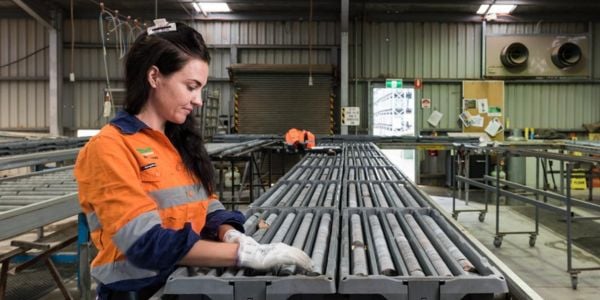
Geological models are the cornerstone of every mining operation.
Understanding the interplay of lithology, alteration, gangue and economic mineral distribution, weathering and structure are important in delivering a model which best reflects the underlying geology and can then be used as the fundamental basis from which mine planning and evaluation studies are developed.
The geology itself is unchanging. It is our perception of the geology that changes as we get more information. Therefore, geological models cannot be static. As new data is collected and validated, models must be continuously refreshed to provide the latest knowledge to consumers of the resource model. Geologists hold the keys to the most valuable data and are accountable for its timely provision.
Current resource modelling practices are being challenged as upfront performance comes into question. The timeliness of model generation is important with respect to improving accuracy and mine productivity. Taking days, weeks or even months to refresh resource models is no longer sustainable.
Artificial intelligence and cloud computing herald significant increases in the speed and repeatability of modelling, with the promise of streamlining daily workflows for geologists and engineers. This approach is supported by machine learning and delivers the best of both worlds – removing the need for mining professionals to spend time on mundane processing tasks while freeing them up to apply their professional expertise to interpretation and evaluation.
Technological innovation can already, or will soon be able to, emulate and improve on many tasks which were once the sole responsibility of the mine geologist. Enhanced sensors can scan and characterise rock types and alteration, and others can interpret frequency and orientation of structures. Machine learning services can take this input data and create interpreted 3D models within minutes, generating block models for grade estimation and reporting.
Digital transformation requires data analytics. To drive your operation from these analytics, you need to adopt a data driven culture. Not just you, your team or your site, but the entire company needs to embrace change to benefit from the transition to digital systems.
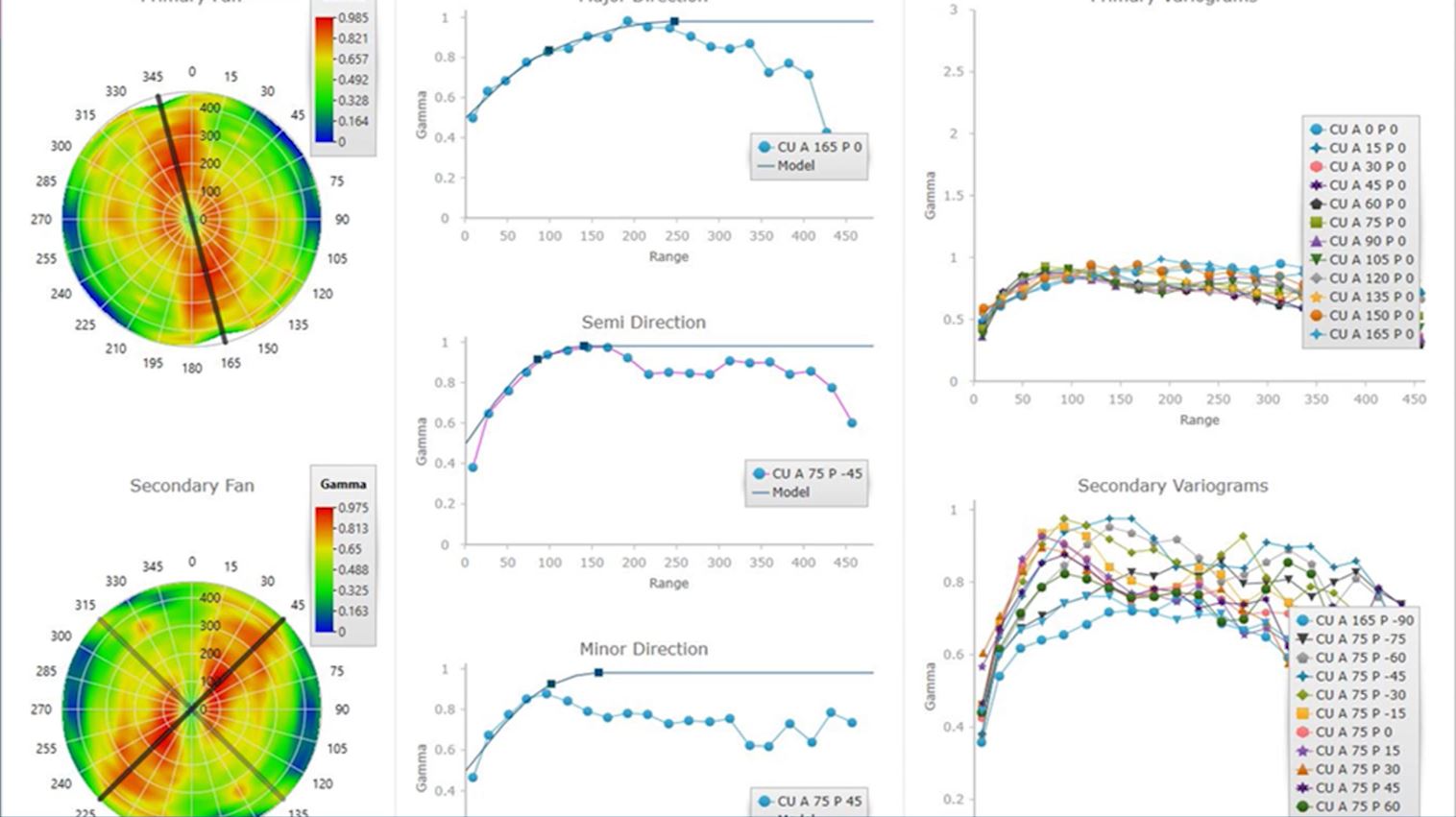
Figure 1. Example of geological data displayed on a digital dashboard.
A data driven culture embraces systems which are robust, repeatable and user-independent, meeting the needs of a mobile, shift-based and geographically dispersed workforce. A data driven approach requires thoughtful examination and documentation of data inputs and processes. It requires moving away from a traditional hierarchical way of working to a more distributed model. From a data point of view this can be termed ‘the democratisation of data’.
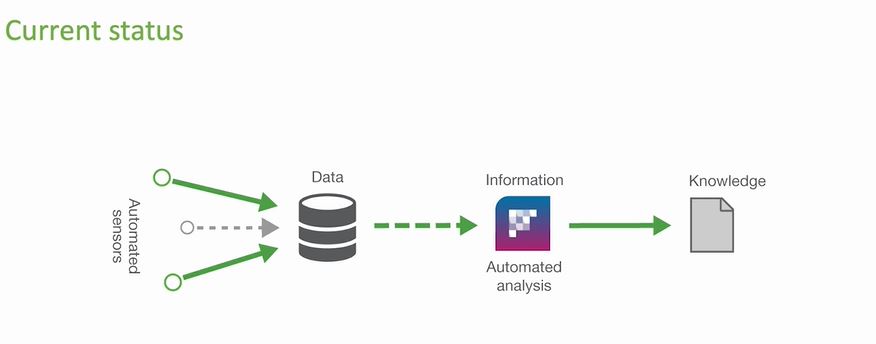
Figure 2. The current status of geological data gathering sees a small amount of automated sensors providing data that can automatically be analysed and turned into useful information for geoscientists.
Digitalisation is the pathway to the democratisation of data, allowing organisations to realise the benefits of a continuously updated single source of truth. Cloud computing has also made this approach more practical, as there is no need for capital outlay or maintenance costs – companies can just pay for computer time. A data driven approach also removes much of the personal geological bias and makes for a consistent, repeatable and auditable process.
With the complete adoption of a data driven workflow, the corporate geologist analyses information on screen as it passes through the system, with signoff points at critical stages. Data imports are fully connected, data is validated, processes are automatically triggered on preset thresholds, and results are collated and displayed with alerts to users when ready for analysis and signoff. The geological dashboard provides an analogue to what already exists in the mine processing environment, where data flows and key criteria are observed as material steps through the system.
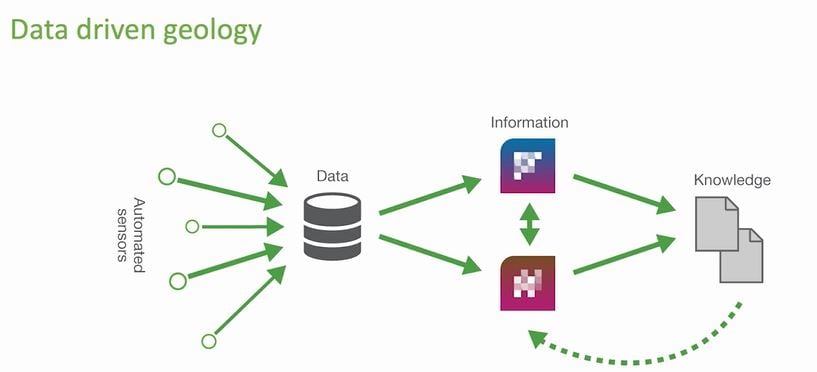
Figure 3. Data driven geology sees many more automated sensors providing large amounts of data, which can be automatically analysed and added to the knowledge base; the knowledge base can ‘feed back’ the data to create a continuously up to date model.
To put this into perspective, in an open pit production environment a data driven system provides fully automated:
- input of new data from core scanning, laboratory analysis and geophysical sensors
- data validation against predetermined rules
- integration of all sources of data into standardised and accepted units
- prediction of missing data from neighbouring sample data
- derivation of classification codes based on lithology, chemistry or other measured criteria
- construction of 3D domain models
- estimation of numeric and categorical variables
- generation and optimisation of grade control dig outlines
- reporting of grades and volumes of each material type
- upload of dig outlines to the production management system for deployment.
This data driven process runs in minutes, ensuring that mine production is always using the latest and most relevant data. A dashboard allows tracking and management by the ore production manager with alerts triggered when data driven processes detect data or results outside preset thresholds. Otherwise, no manual interaction is necessary. The data drives the process.
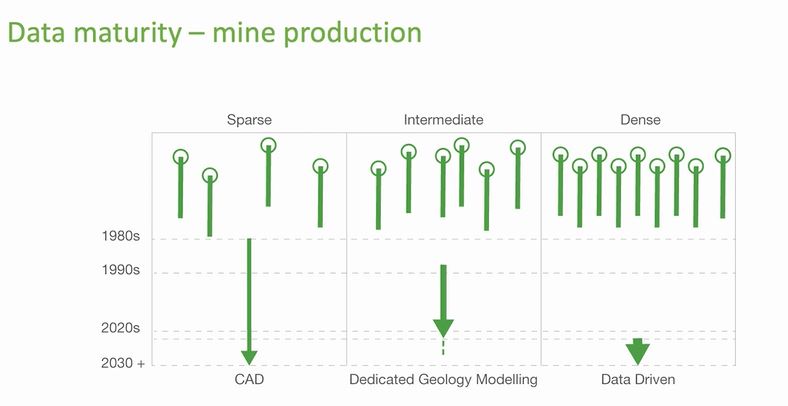
Figure 4. Timeline showing the different approaches to geological modelling, and the amount of data points contributing to each.
With interest in mining related studies waning at universities, there are not the number of graduates available to fulfil the workload demanded by current work practices. A data driven approach supplements this diminished pool of labour and mentors these fledglings into a professional and accountable workforce. This is the future of mining.
Committing to this change in workplace operations requires a cultural shift which may not come easily. The technical side of a data driven approach can be achieved with emerging technologies. Managing the human side of data driven systems requires clear communication and support from management, as well as personnel who are adaptive to the benefits of an improved and more efficient means of delivering outcomes.